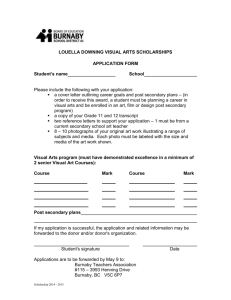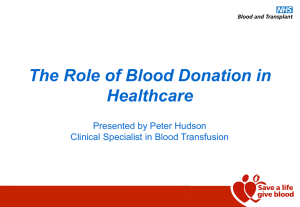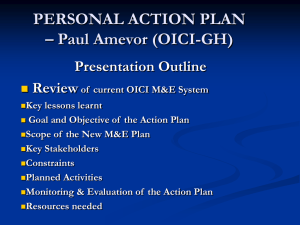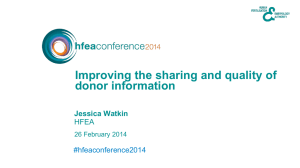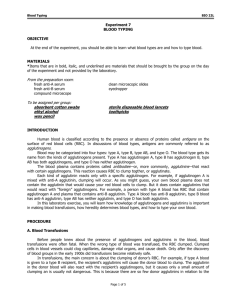A101 W01 Rescue Mission
advertisement
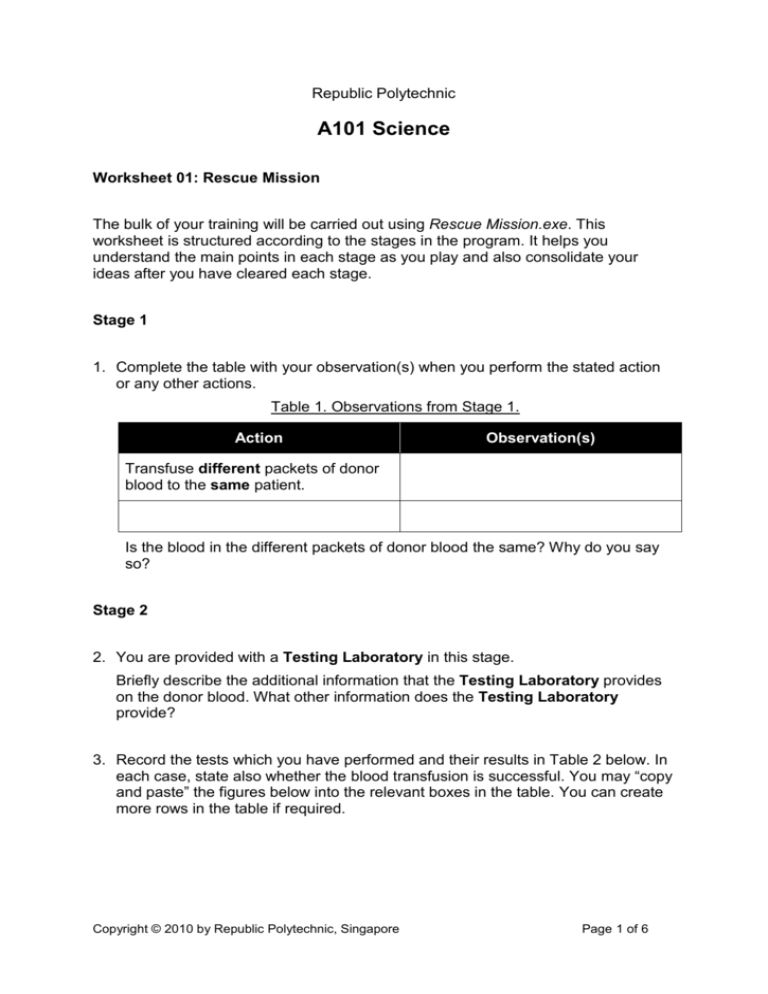
Republic Polytechnic A101 Science Worksheet 01: Rescue Mission The bulk of your training will be carried out using Rescue Mission.exe. This worksheet is structured according to the stages in the program. It helps you understand the main points in each stage as you play and also consolidate your ideas after you have cleared each stage. Stage 1 1. Complete the table with your observation(s) when you perform the stated action or any other actions. Table 1. Observations from Stage 1. Action Observation(s) Transfuse different packets of donor blood to the same patient. Is the blood in the different packets of donor blood the same? Why do you say so? Stage 2 2. You are provided with a Testing Laboratory in this stage. Briefly describe the additional information that the Testing Laboratory provides on the donor blood. What other information does the Testing Laboratory provide? 3. Record the tests which you have performed and their results in Table 2 below. In each case, state also whether the blood transfusion is successful. You may “copy and paste” the figures below into the relevant boxes in the table. You can create more rows in the table if required. Copyright © 2010 by Republic Polytechnic, Singapore Page 1 of 6 Table 2. Tests conducted in Stage 2 and their results. Test Trial Donor’s red blood cell Recipient’s red blood cell Result Transfusion successful? 1 2 3 ⁞ 4 5 6 ⁞ Copyright © 2010 by Republic Polytechnic, Singapore Page 2 of 6 With reference to Table 2 above, answer the following questions. a. For the test result where no clumping occurs, what pattern do you observe for each combination of donor and recipient’s red blood cells? b. For the test result where clumping occurs, what pattern do you observe for each combination of donor and recipient’s red blood cells? c. Which test result corresponds to a successful blood transfusion? d. Hence, what can you conclude about the success of blood transfusions based on the surface molecules on the donor and recipient blood cells? Stage 3 4. When playing Stage 3, did you consider a. which donor blood can be donated to all the recipients, b. which donor blood can be donated to only one recipient? (Hint: These could be inferred from your answers in Q3.) Hence, to save all the patients, which donor blood did you use up first in the transfusions? Stage 4 5. Based on your learning so far, state the condition for a successful blood transfusion. * 6. A student from another class commented that if a donor can successfully donate his blood to a recipient, the donor can also successfully receive blood from the same recipient. Do you agree with this student? Explain your answer. Stage 5 7. What differences do you observe between this stage and Stage 2? 8. Based on your conclusion in Q3d and the condition you have stated in Q5, suggest how you can determine whether a blood transfusion would be successful in this stage. You may also create a table that is similar to Table 2 in Q3 to consolidate your observations. Copyright © 2010 by Republic Polytechnic, Singapore Page 3 of 6 * 9. State whether the blood transfusion in each of the following cases will be successful. Support your answer with reason(s). Table 3. Different cases of blood transfusions. Donor’s red blood cell Recipient’s red blood cell Successful? Reason(s) Case Donor’s blood type Recipient’s type Successful? Reason(s) 4 O+ AB+ 5 A+ A- 6 AB- AB+ Case 1 2 3 Stage 6 10. The unknown blood type can have one or two surface molecules. By testing a known blood type with an unknown blood type, you can draw conclusions about the surface molecule(s) present or absent on the unknown blood type. You may use the following table to help you along. Copyright © 2010 by Republic Polytechnic, Singapore Page 4 of 6 Table 3. Tests conducted using the Unknown Blood Type. Donor’s red blood cell Recipient’s red blood cell Result Surface molecule(s) that could be present/absent Tests conducted using Unknown Blood Type ___ ⁞ ⁞ Copyright © 2010 by Republic Polytechnic, Singapore Page 5 of 6 Your learning journey and your presentation Your presentation should represent what your team has learnt today. So a good presentation comes from having a good learning journey. Here are some tips on having a good learning journey and preparing for a good presentation: As you work through the worksheet, note down useful and interesting ideas which are relevant to the problem and which your team has worked through and learnt about. They may be ideas obtained from the worksheet or other sources, or they may be your own ideas. Discuss these ideas with your facilitator as soon as you can, and seek his/her advice on how to improve on them. Your facilitator may ask you questions to check your understanding and to guide you further. Try to connect your ideas together to form a solution to the problem. This will give you the main flow of your presentation. Explain your solution clearly and with examples so that it is easy to understand. Be sure that all team members can explain every part of the presentation. If you copy words and ideas from other sources (whether from the Internet or from your friends or from other places) but cannot explain them, your facilitator will disregard what you have presented. This is because it is your own learning and explanation which are of value, not the things you have copied but are unable to explain. Going Further 11. Aside from the surface molecules associated with different types of blood, red blood cells also contain other types of surface molecules. One such example is haemoglobin, the molecule that allows red blood cells to carry oxygen. Based on your understanding of surface molecules and blood transfusions, discuss whether the presence of haemoglobin on the surface of donor red blood cells is likely to cause blood transfusions to fail. Copyright © 2010 by Republic Polytechnic, Singapore Page 6 of 6

